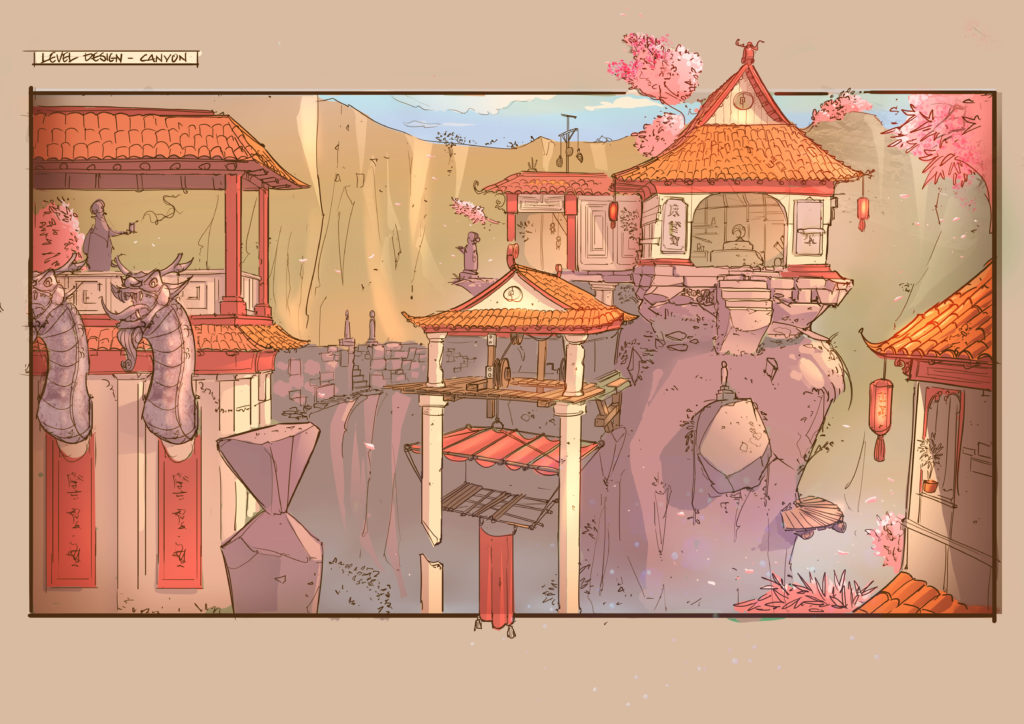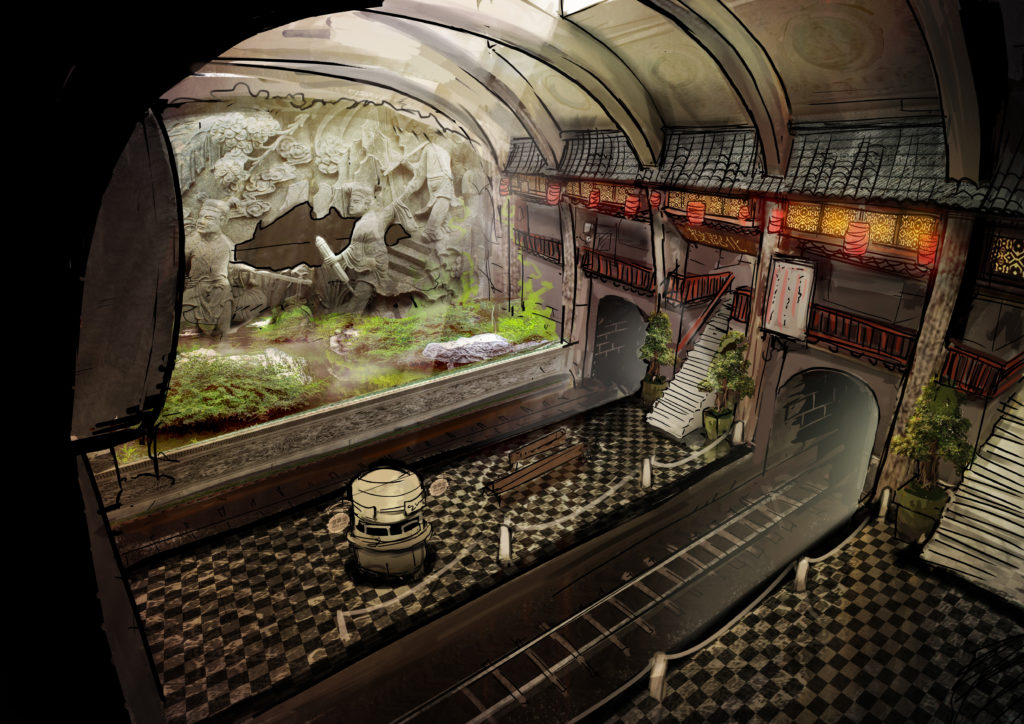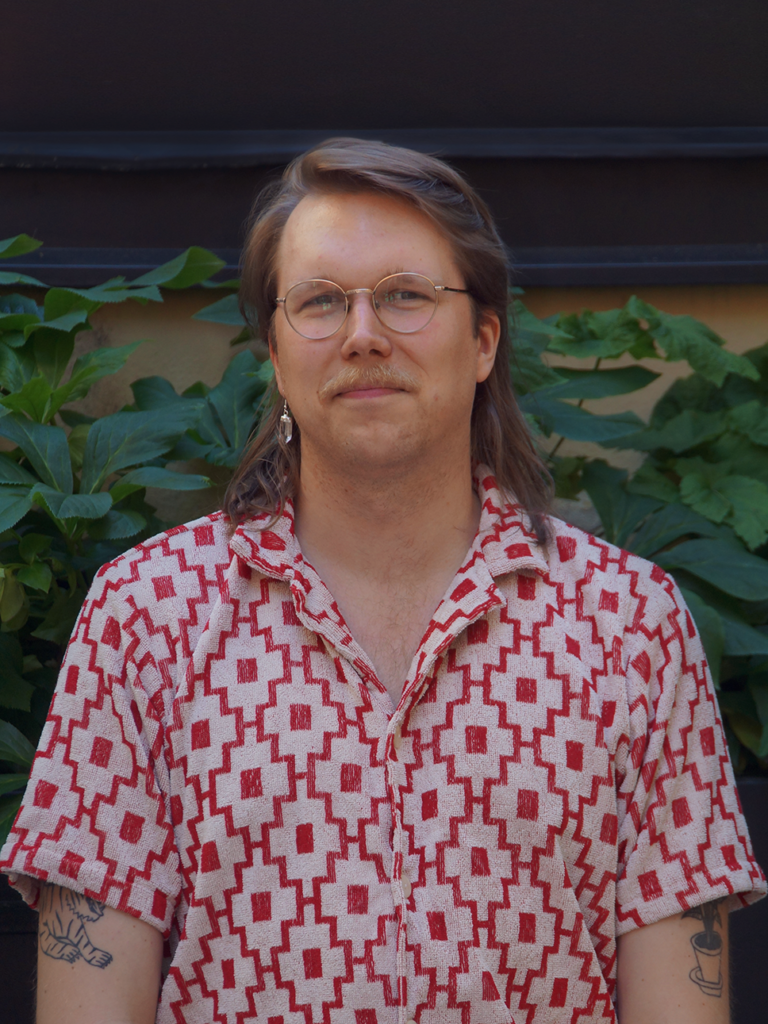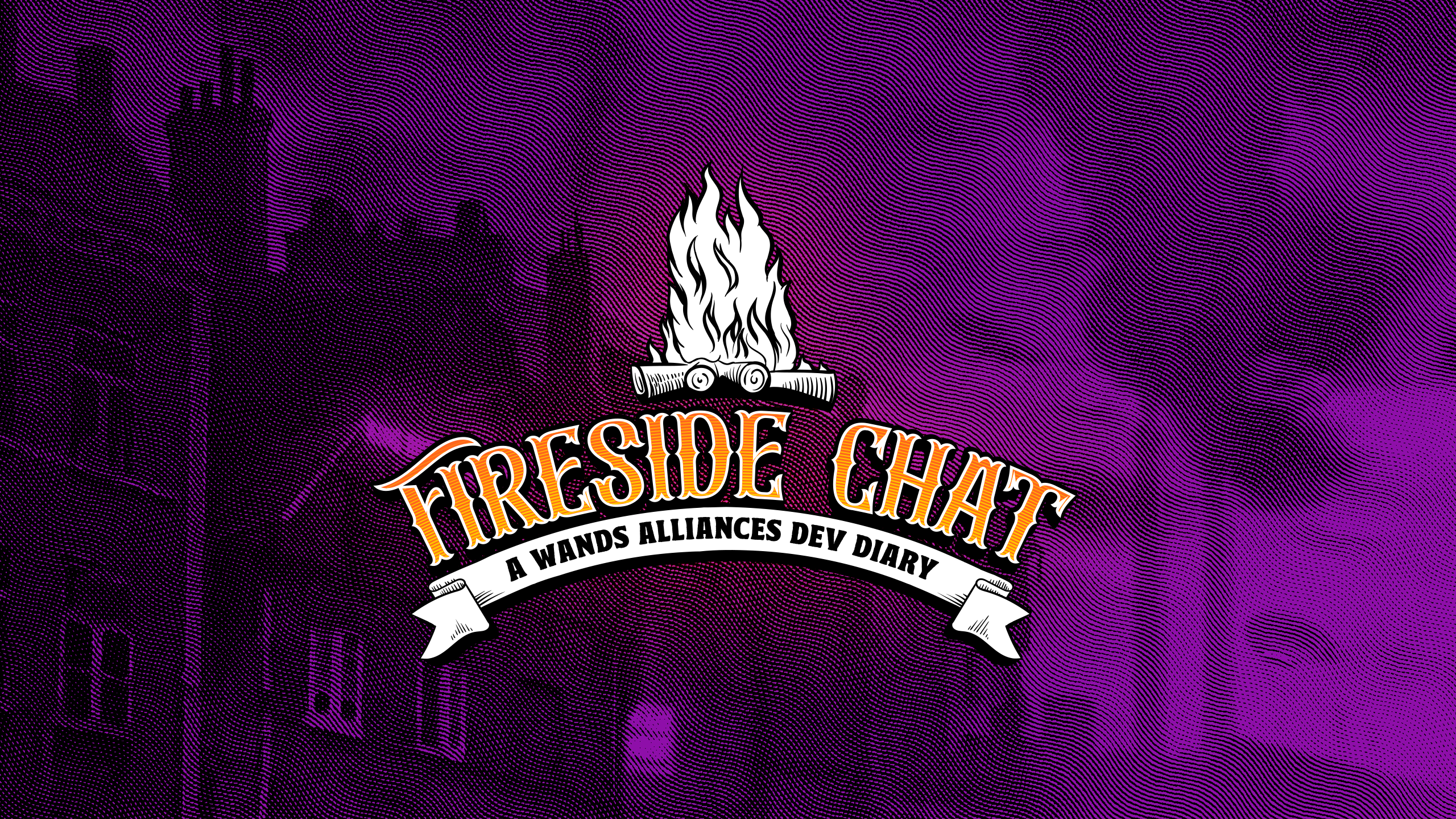This interview was conducted in May 2022 and features five members of the original Wands-team at Cortopia Studios. It’s the first piece in a series of five or more.
Thomas (T): As we mentioned earlier, Wands was one of the first competitive online VR action games. It also quickly became popular. When did you realize you were onto something? Did you feel already during development that “This can be really good.”, was it around release or didn’t you feel it at all and it came out of the blue?
Ricky (R): Before the game was released … let me think. We’d done spectator mode with which you could see all ongoing matches. You simply clicked and went into spec mode, it was entirely web based at the time. I know I asked Hannes “Have you tried it and know what happens if there are a lot of ongoing matches in the list, so that everything works?” You hadn’t, and I was like “God daxx it, we have to try with at least a couple of thousand [players] so we know it works!”. Then when we released it … well, I think we overestimated the size of VR in August 2016, haha, so after release it was more like “Ah, cool, some people are playing!”, but there hardly weren’t thousands of concurrent matches.
With this game (Wands Alliances, Editor’s note), I think it’s been more a slow and steady pace thing. [Before], we sort of, there were some new platforms, we ported it, VR has continued to grow, and just like you said, we were one of the first competitive games people knew about. New players trying out VR the past two or three years might not know about Wands as well in comparison [to new games].
T: It might sound crass, but the fact that Wands is even played at all, six years and counting, is a sign of strength. Not many VR games that old have an active community and player base.
R: Yeah, I mean we still have loads of players daily. That’s pretty cool.
Sources of inspiration
T: If we leave the techier side of development for a while. If we put aside the elephant in the room in the shape of a certain Harry Potter, what were your sources of inspiration in terms of gameplay? Ricky, you talked about earlier how you wanted to be able to dodge projectiles when you worked on the positional software. How did that translate into, and end up in, magic? Somewhere, someone must’ve thought “This is cool, we could do it like this!”.
R: It was very early. In the winter of 2015, Huulko (Mikael Huulko, an early co-worker at Univrses and Wands, Editor’s note) and I started talking about it, just a few days before I reached out to Petter. He quickly went onto drawing sketches of the world, contemplating what the wands could look like and so on. While I was more like “There could be more than two people playing ..?” he locked onto duels from the get-go. We both probably should have been thinking “VR is a new thing, there aren’t that many [duelling games] out there from the start – like two, tops!”. But yeah, it was mostly him thinking duels were cool. He dug up images from old pistol duels and stuff.

R: We also thought, and I’m slipping away from the question, but I just thought of the masks. In Wands, all the characters wore masks. We thought it was a fun thing and that they would give the game a cool look, but also, since you’re in a mask in-game, you also feel like you’re in a mask yourself. That’s why we made a mirror in the game so you could see yourself in it. We wove that whole feeling in the game’s lore, that magic in this world is dangerous and physical, almost chemical, and that the masks are protection for those who partake [in magic]. And now I forgot what the question was.





T: No worries. Sources of inspiration. When you spoke about the embryo you mentioned that a large part was that projectiles from classical shooting games such as CS and modern weaponry moved too quickly. Was that how the wands came about in the first place, that you could decide on the tempo yourselves?
R: I think so. Guns are unnecessarily fast [for VR]. We had dodging built in at first, so I think we were already thinking about that. Even when I spoke to Petter the very first time, we had decided on wands and magic. Then the world building Mikael did with The Beyond accelerated that.
T: It sounds as if he was an important contributor in the beginning?
R: When it comes to lore and the world, yes. Considering he left so soon, we didn’t do much with it however, but we kept the base. Levels were very sprawling, especially when we added Eastern Realms. We never got around to making the levels feel connected in the lore with a distinct, otherworldly feel. The premise was initially that you moved through various mirus (gateways, Editor’s note) to The Beyond and that arenas were located there. When you were in the lobby, it felt like you were in this weird fuxxing place, but then when you started playing it almost felt like you were in our normal world. But yeah, story wise all these places in The Beyond are different locations you jump to via a mirus as I recall it.
T: This dark, gritty mix of gothic and Victorian. Does anyone know where that visual tone came from? Was that a personal preference of Mikael’s?
R: At first it was Persian! Do you remember that Petter?
Petter (P): Yes. The first tests we did.
R: M-hmm. It really was. We called the character Fresh Prince of Persia.
Everyone: (Laughing like crazy)
“We called the character Fresh Prince of Persia”
Ricky Helgesson






Steam but not punk
R: Then we ended up in London, but I can’t remember how. We wanted steampunk but not too much steampunk. In the first trailer it says “Steam” but not “punk”.
T: The setting is of course not uncommon in sci-fi, fantasy and gaming, and gothic and Victorian settings are rewarding. It’s pointy, sharp, cool. I get a lot of flashbacks to Dishonored when I play Wands (Arkane Studios’ immersive stealth sim, Editor’s note), especially the first time I picked it up, but I don’t know if that was something you played?
R: He [Mikael] was in the world building but not in the visual creation process, that was just Petter, so that question is better aimed at him.
P: Yeah … the style was added quite late if my memory serves me right and was based heavily upon technical limitations on the platform. Just as you [Ricky] say, it was already “A little Victorian and steampunky”, those were actual words we’d been given. How they were implemented though, and the aesthetics, were based on “What’s the coolest we can do with the resources on these platforms? How can we cram as much detail out of it as possible, how do we make it visually satisfying?” That style fitted well. It’s pretty dark and gritty, you can use lighting but also work with worn textures to hide the lack of a fancy lighting algorithm running in the background. The style we chose checked a lot of boxes.
R: I was really worried along the way when we decided to run with steampunk. I started to realize how God daxx little a Samsung phone that could render two images per second could muster. There wasn’t any tech to help you there, every image had to be rendered and then the next one from scratch … and steampunk! With all its blxxdy details and small gadgets. At the same time. we’d said that we wouldn’t try to make it that detailed. Both the technical limitations and decision to not have the game scream steampunk made us find a nice balance that in some ways also has followed over into Alliances, I think.
Max (M): I think we all agreed that there’s some ugly ass steampunk as well. Glue cogs on a top hat, sort of. It’s the worst there is.
T: That’s interesting, Petter, compensating for the platform’s flaws. You can be dark and gritty – if there are shadows in an area you save some polygons you don’t have to render. It can be low poly and dark. Parallel to that you have the [Victorian] steampunk with extremely detailed, intricate patterns, clear and distinct colors, lace mixed with feathers … [it was probably] good you stayed off that track? It would’ve presented a much greater challenge six years ago in VR.



Six degrees of separation
T: Speaking of which and the fact that six years is a very long time in VR-context. There must’ve been things you learned from Wands, things you were happy with and things you wish you’d done differently? Is there anything you remember straight off the bat you learned, or learned to never do again?
(Silence)
T: Something you were happy with might be an easier one?
R: Well, I can at least say that when we went over to 6DOF (“six degrees of freedom”, the number of movement axes being tracked, Editor’s note) we didn’t want to divide the player base too much. Therefore, we couldn’t alter the game’s core when we did that move [from 3DOF to 6DOF]. That led to a feeling of sadness where most users in the end played on 6DOF while the game was made for 3DOF. It lacks a lot of the stuff we’re doing for Wands Alliances now – covers and where you use your playspace and so on. I felt that was a bit … well, sad.
Another thing is AI, where we built … something, really fast. We definitely learnt from that, that if you’re going to do AI you’d better try damn hard. The spectator mode, that was a shame. It really felt like a third party problem and not us messing up, but that was really no fun at all. With every update, Hannes was grinding his teeth, we had to get help from Unity consultants and yadda yadda. That … no, that wasn’t fun at all.
Another lesson learned is that it was very early to do a multiplayer game [in VR]. It would’ve been better to do single player first and then, some years later, MP, considering the [small] sized player base.
P: One important thing I think we took away from those days is to test everything in the headset. What you implement and what you imagine isn’t always the same as what it feels like when you use it. Especially when starting out with VR. Try it out and how it feels before you do what you’re planning on doing. It may very well be very different from what you expect. Positioning in UI, graphical elements … for one thing, to have depth perception affects a lot. When we did our first workshop we sat for a long time before we were content. Since we didn’t have positional tracking, distance was very important. It would have to be close enough for you to understand what things were, but far enough to get an overview. Stuff like that is impossible to figure out on paper, that needs to be iterated in a headset to know how it feels.





Max Huusko
R: When we created the first level we looked at this painter … Piranesi, right? That level was called Piranesi for a looong time, long before we renamed it Aspis Prison before releasing it. Now what was I saying … yes! One thing we learned is that we were pretty … we didn’t rush things just to get our game out. It was just “We’re building a tech demo.” for a long time. We allowed ourselves to feel. Like: ”How many teleporting spots are we going to have?” At first we tried having them pretty much all over, but that just resulted in people being sooo hard to hit. I mean they were everywhere. Then we tried almost none. Striking that balance was interesting. When we did the spells … that’s right! We had this kid visiting who was like nine, or seven or eight or something, who came up with a bunch of spells.
T: Were there anything he created that ended up in the game?
R: I think so! I think Phoenix was his (a spell in Wands, Editor’s note) and there may very well have been more spells that either originated from him or that we were thinking of using and he sort of validated. It was awesome. He wrote spells for a whole day, there were several sheets of paper of them.
T: Does anyone know what that guy is doing today?
P: Hopefully playing Wands.
R: No, I don’t remember. He was somebody’s relative or something. Hmm, hang on … I might be able to remember … He was a relative to a guy called David*, that’s it.
T: I bet he’s Vice President at Resolution Games or something like that.
Everyone: (Laughing)
R: Yeah, and he wants 25 % of the whole company.
T: After this, there’ll be a legal representative coming by our offices with some papers …
If I could turn back time
T: If we could go back in time, is there anything you wish you could’ve done differently six years ago? What would you have wanted to do, what would you remove or change? Alex, you’ve been fairly quiet ..?
Alexander (A): I guess I have. Well, you who know me know that I want to change pretty much everything [afterwards], especially the things I’ve worked with. Back then there weren’t a lot of documenting and no common thread to follow, it was mostly “steam” that pulled the game in its own direction. With that in mind there has been a lot of trial and error, and we’ve learned over time how important documenting and pulling in the same direction is. Those things I wished I’d known then. When you started out you were high on life – “I work with games and can do what I want!”. Going back and looking at specifics it great because I’d probably done everything differently since it helps you develop. Max, do you have anything here?
M: No, it’s mostly the same as you. I did a lot of UI, sat for days and drew some thing that didn’t work whatsoever and the thing we finally used took fifteen minutes to implement … But we were green, so no one could guide us or offer any hints.
A: Things were all over the place. I don’t know what her position was … CEO? Lisa. She was in London, you had just lost your project manager so at least when I entered there was lack of structure. My first day when I began and asked “What do you want me to do?”, someone said “Well, maybe do some Wands?”. There was a lot of shooting from the hip.
M: Yeah, everything you drew you drew because you liked it yourself, and then Alex does something he thinks is cool, and then Petter …
A: Yes. Everything was built on personal taste, sort of.
T: Alright, so a lot of the things you wish could have been better in the beginning were structural things. You were a new company, some processes weren’t there and so on. A lot of game designers have something they remember they had to let go – something they wanted to do or use but couldn’t because time or money ran out, the platform wasn’t ready etc. Was there a feature during the development process you had to scrap you feel was really cool?
A: I feel like that with a thing we cut, and that was when you were supposed to shoot a bunch of monsters and stuff. I can’t remember what that place was called, it was some kind of limbo world where we wanted a pastime.
T: Some kind of horde mechanic?
A: Yes, when you waited for a match. You felt that we broke the setting and order of things a little by adding that. There was the Victorian feel and a distinct theme, but when that came in it felt incredibly stressed and not at all thought through.
Hannes (H): No, it wasn’t very good.
M: No, it was really bad.
H: It’s quite telling … yet again, it’s the process. We remade and dropped things, remade and dropped in several iterations. We did it with characters, with vanity items and … it was as if we used our players as testers while we learned how to develop games. I think we could’ve done that in a better way.
A: Mmm.
H: Especially if we’d gotten a game designer earlier who knew what they did, and a producer who could get things together a little when we were about to release things. In the beginning it was like we released the game and then we got a bug report in our forum and I was like “Woah, we need to release an update!”, rushed through a patch and then bang, the whole game crashed and then we spent the entire weekend fixing it. There were a lot of that stupid shit.
T: That whole thing is classic indie development, isn’t it? You don’t have the resources, you haven’t done it before … Reflecting upon it now, I can imagine though it feels quite nice sitting here six years later, realizing “We’re still here, we’re still in the game.”, even though you had a rough start. It has to be like “Damn, we’re still here.”
M: Absolutely. I’ve gone from “I just like to draw.” to feel happy when I see Gantt charts and bug reports.
A: Definitely.
M: I mean, project management. That kind of stuff. You get so … you can breathe a little. Without it, it’s so easy everything becomes treading water all the time when you don’t have clearly set goals. “Let’s do this, this looks fun!”
A: Yes. Yes. It’s a fuxxing trip. From the structure we have now, albeit we have some ways to go, to how it’s been.
T: I can imagine. I’ve worked in both small and larger projects, but not in game development per se.
A: And even if there have been highs and lows, even at my worst times here, I’ve always been too curious to leave. Damn, it would be so fuxxing cool to ride it to the end. Man, I wouldn’t want to quit and then the company took off. With that result in hand I’d regret if I’d left. It’s with pride I’m still here and see how things look today. I mean we’ve got Dice here instead of going to Dice.





The story of Wands continues in part three. It will be published here later in the fall.
*Footnote: The name has been exchanged.



